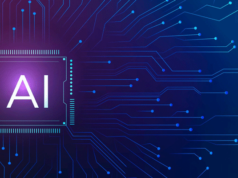Sustainable Technology: Innovations for a Greener Future
In a world defying marvelous natural challenges, the occupation of technology in making a sustainable future has never been more basic. The possibility of sustainable technology, much of the time implied as “green tech” or “clean tech,” encompasses headways that expect to determine crushing normal issues while progressing money related advancement. This article researches the strong scene of sustainable technology and its noteworthy impact on various regions, preparing for a greener and more grounded future.
Introduction
Sustainable technology, at its staple, attempts to balance financial progression with environmental commitment. With the consistently forming stresses over natural climate change, resource weariness, and pollution, pioneers across the globe are outfitting the power of technology to cause plans that to alleviate environmental impact. This article plunges into the key locales where sustainable technology is gaining ground, showing how these improvements are shaping a more eco-obliging and sustainable world.
Renewable Energy: The Power of Innovation
One of the most observable and successful pieces of sustainable technology lies in the space of renewable power. Regular energy sources, similar to petrol subsidiaries, contribute generally to ozone hurting substance transmissions as well as address a threat to long stretch energy security. As a result of these challenges, inventers are going to sustainable power sources like solar systems, wind, and hydropower.
Solar technology, explicitly, has experienced groundbreaking movements. From the humble solar panel to cutting edge photovoltaic cells, the efficiency and sensibility of solar energy have extended emphatically. Emerging advances, as solar paint and see-through solar cells, are expanding the expected results of integrating solar power into ordinary everyday presence.
Essentially, wind energy technology has gone through huge upgrades. High level wind turbines with better optimal design and materials are improving the productivity of outfitting wind power. Advancements in wind farms and vertical hub wind turbines exhibit the responsibility of the business to investigate different and sustainable energy arrangements.
Hydropower, a longstanding wellspring of environmentally friendly power, is likewise seeing mechanical developments. Limited scope hydroelectric generators and submerged turbines are taking advantage of beforehand undiscovered wellsprings of hydropower, giving sustainable energy arrangements without the ecological effect of enormous dams.
Energy Storage: Overcoming Intermittency
While the ascent of sustainable power is promising, the irregular idea of sources like solar and wind represents a test for constant power supply. Sustainable technology is attending to this chlange through improvements in energy capacity arrangements.
Battery advancements, specifically, have seen wonderful improvement. Lithium-ion batteries, generally utilized in electric vehicles and convenient gadgets, are turning out to be more productive and financially cheap. Moreover, specialists are investigating elective materials, for example, graphene and strong state batteries, to additionally further develop energy capacity limit and natural supportability.
Grid-level energy storing frameworks, as drain off hydro capacity and compressed air energy capacity, assume a significant part in adjusting the discontinuous idea of sustainable power sources. These innovations empower the capacity of overabundance energy created during busy times and delivery it when request is high, guaranteeing a steady and dependable power supply.
Smart Cities: Integrating Sustainability into Urban Life
The idea of smart cities is reforming metropolitan living by coordinating sustainable technology to upgrade proficiency, lessen natural effect, and work on the general personal satisfaction for inhabitants. From intelligent transportation frameworks to energy-productive structures, smart cities influence technology to establish more sustainable and strong metropolitan conditions.
Smart grid frameworks improve energy dissemination, taking into account better administration of assets and lessening waste. Mechanized lighting and environment control in structures add to energy productivity, while sensors and information examination help screen and oversee traffic stream, decreasing blockage and air contamination.
Metropolitan cultivating, worked with by vertical cultivating and hydroponics, is one more feature of sustainable technology adding to smart cities. By advancing neighborhood food creation, these advancements lessen the natural impression of food transportation and address the difficulties of conventional agribusiness, like water utilization and land exhaustion.
Circular Economy: Reducing Waste and Promoting Reuse
Sustainable technology is likewise driving the change towards a circular economy, where the accentuation is on limiting waste and expanding the life expectancy of items. Conventional direct economies, described by a “take, make, dispose” model, are being supplanted by circular tactics toward that focus on manageability.
Advancements in materials science and reusing advancements are key drivers of the roundabout economy. Biodegradable materials, for example, bioplastics, are acquiring prevalence as options in contrast to conventional plastics got from petroleum derivatives. High level reusing processes, including substance reusing and squander to-energy advancements, are assisting with removing esteem from squander streams that would somehow wind up in landfills.
3D printing, or added substance fabricating, is assuming an extraordinary part in the circular economy by empowering on-request creation and lessening material waste. The capacity to make items layer by layer takes into consideration more productive utilization of assets and customization, advancing a shift towards sustainable assembling rehearses.








